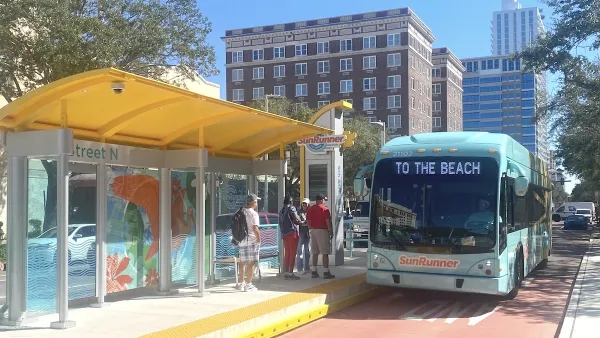In the early part of the 20th century, Europe looked toward the U.S. to learn how to adapt cities to car travel, as difficult as that may seem. It wasn't until the 1990s, in the presence of sprawl and failing public transit that the pattern reversed.
If anyone is qualified to compare transportation and land use in the U.S. and Europe, it is Ralph Buehler, PhD, associate professor in urban affairs and planning and a faculty fellow with the Metropolitan Institute at Virginia Tech’s Alexandria Center. "Most of his research has an international comparative perspective, contrasting transport and land-use policies, transport systems, and travel behavior in Western Europe and North America," according to his bio.
In this piece, he puts forward nine reasons why Americans drive everywhere, or so it seems. Just look at short trips under one mile: "Americans drove almost 70 percent of the time, while Europeans made 70 percent of their short trips by bicycle, foot, or public transportation," he notes.
Who do we blame? Transportation planners and engineers, for one. Under reason #2:
Road standards. As a result of early mass motorization, American cities were first to adapt to the car at a large scale. U.S. planners and engineers developed initial standards for roadways, bridges, tunnels, intersections, traffic signals, freeways, and car parking. Successful innovations quickly spread elsewhere, often in the form of standards. Europeans also experimented with automobile infrastructure—Stockholm opened a large inner city clover-leaf interchange in the 1930s—but European cities adapted to cars much more slowly than U.S. metros did, especially before World War II.
The one reason that may jump to mind first for many - I know it did for me, was gas prices. That was #3:
Vehicle taxes. Taxation of car ownership and use has traditionally been higher in Europe and helped curb car travel demand. Today a gallon of gasoline is more than twice as expensive in Europe than in the United States. Moreover, in Europe gas tax revenue typically contributes to the general fund, meaning roadway expenditures compete with other government expenditures. In many U.S. states and at the federal level, large parts of the gas tax revenue are earmarked for roadway construction, assuring a steady flow of non-competitive funds for roads.
Okay, you'll have to read his piece to see the other seven reasons. One last description of the author. Dr. Buehler is also co-editor of City Cycling (MIT Press, 2012) and based in Old Town Alexandria, Virginia.
FULL STORY: 9 Reasons the U.S. Ended Up So Much More Car-Dependent Than Europe

Planetizen Federal Action Tracker
A weekly monitor of how Trump’s orders and actions are impacting planners and planning in America.

Map: Where Senate Republicans Want to Sell Your Public Lands
For public land advocates, the Senate Republicans’ proposal to sell millions of acres of public land in the West is “the biggest fight of their careers.”

Restaurant Patios Were a Pandemic Win — Why Were They so Hard to Keep?
Social distancing requirements and changes in travel patterns prompted cities to pilot new uses for street and sidewalk space. Then it got complicated.

Platform Pilsner: Vancouver Transit Agency Releases... a Beer?
TransLink will receive a portion of every sale of the four-pack.

Toronto Weighs Cheaper Transit, Parking Hikes for Major Events
Special event rates would take effect during large festivals, sports games and concerts to ‘discourage driving, manage congestion and free up space for transit.”

Berlin to Consider Car-Free Zone Larger Than Manhattan
The area bound by the 22-mile Ringbahn would still allow 12 uses of a private automobile per year per person, and several other exemptions.
Urban Design for Planners 1: Software Tools
This six-course series explores essential urban design concepts using open source software and equips planners with the tools they need to participate fully in the urban design process.
Planning for Universal Design
Learn the tools for implementing Universal Design in planning regulations.
Heyer Gruel & Associates PA
JM Goldson LLC
Custer County Colorado
City of Camden Redevelopment Agency
City of Astoria
Transportation Research & Education Center (TREC) at Portland State University
Camden Redevelopment Agency
City of Claremont
Municipality of Princeton (NJ)




























